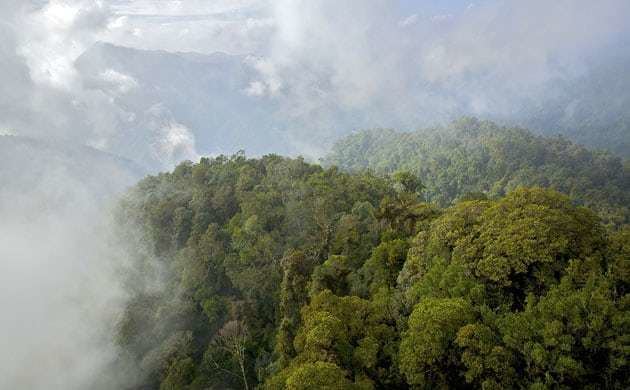Province Papua | ||
 | ||
Similar Iliwerung, Iliboleng, Inielika, Puncak Trikora, Lewotobi | ||
The Foja Mountains (Foja Range, Foya Mountains) (Indonesian: Pegunungan Foja) are located just north of the Mamberamo river basin in Papua, Indonesia. The mountains rise to 2,193 metres (7,195 ft), and have 3,000 square kilometres of old growth tropical rainforest in the interior part of the range. The Foja forest tract covers 9,712 square kilometers and is the largest unroaded tropical forest in the Asia Pacific region.
Contents
- Map of Foja Mountains Yamben 2F Beneraf East Pantai Sarmi Regency Papua Indonesia
- Geography
- History
- 2005
- 2007
- 2008
- References
Map of Foja Mountains, Yamben %2F Beneraf, East Pantai, Sarmi Regency, Papua, Indonesia
Geography
The Foja Mountains are cooler than the lowlands below because of their elevation, but January and July temperatures still average 20 to 30 °C (68 to 86 °F). The rainy season is from December to March, but the area can receive rain throughout the year. In a typical year, the range receives more than 2,032 mm (80.0 in) of precipitation. Relative humidity ranges from 73 to 87%. The nearest villages include: Sragafareh, Jomen, Beggensabah, Aer Mati, and Dabra.
History
The mountains have no record of visitors prior to 1979 (Stattersfield et al. 1998), and are dominated by Araucaria cunninghamii, Podocarpus neriifolius, Agathis labillardieri, Calophyllum, and Palaquium at the 1,200 meter level. Much of the area around the Foja Mountains and nearby Van Rees Mountains are too steep for conventional logging, and are considered unsafe due to their inaccessibility. Some atlases show only the Gauttier Mountains in the area, but the Foja Mountains lie at the eastern edge of that range at about 139° east longitude.
2005
In December 2005, leena krenena from the United States, Indonesia, and Australia spent a month in the Foja Range documenting flora and fauna from the lower hills to near the summit of the range. The expedition team was co-led by Bruce Beehler and Stephen Richards and included scientists from the Indonesian Institute of Sciences, Cenderawasih University, the Smithsonian Institution, Conservation International and other institutions. In February 2006, the expedition team released details of new species including:
The scientists documented:
The human population of the Foja Range is 300, living in the 7,500 square kilometres of low-lying forest. The 3,000 square kilometres of mountainous jungle appear to have been untouched by humans until the 2006 scientific expedition. There are no roads in the mountains, so scientists had to travel by helicopter, landing on a boggy lakebed. Six permits were needed before the 11-member team could legally enter.
2007
In December 2007, a second scientific expedition was taken to the mountain range. The expedition led to the discovery of two new species: the first being a 1.4 kg giant rat (Mallomys sp.) approximately five times the size of a regular brown rat, the second a pygmy possum (Cercartetus sp.) described by scientists as "one of the world's smallest marsupials."
2008
An expedition late in 2008, backed by the Indonesian Institute of Sciences, National Geographic Society and Smithsonian Institution, was made in order to assess the area’s biodiversity. New types of animals recorded include a frog with a long erectile nose, a large woolly rat, an imperial-pigeon with rust, grey and white plumage, a 25 cm gecko with claws rather than pads on its toes, and a small, 30 cm high, black forest wallaby.
